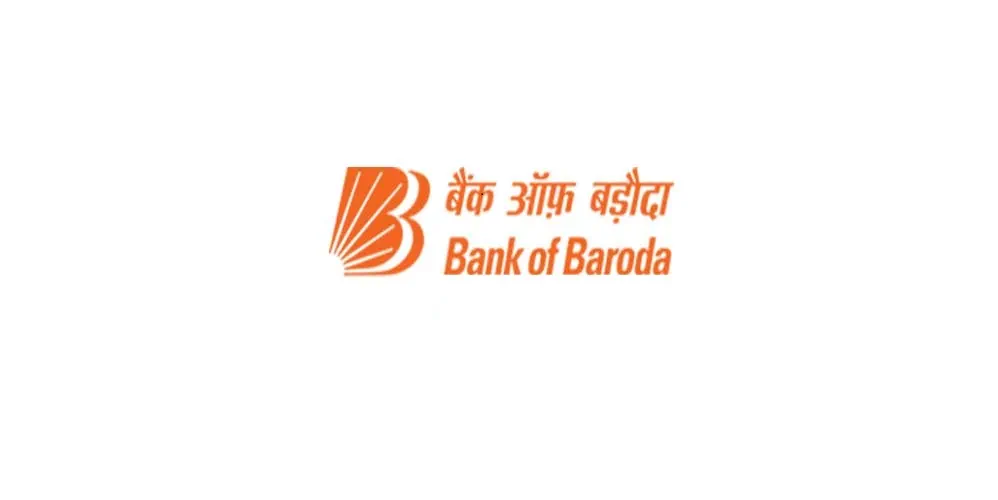
What is Goods and Services Tax (GST) in India - Meaning, Types & Benefits
12 फरवरी 2024

Table of Content
What is GST: its Full form, Key Features & Parameters?
You might also know GST by other names, like Goods and service tax (GST) and it is a value-added tax (VAT) collectively levied on goods and services by the Central and State Governments. Following a dual structure comprising Central GST (CGST) and State GST (SGST), GST plays a significant role in revenue distribution formulated by the GST council. What is the GST Council? The GST Council is a joint forum of the Centre and the States, the Union Finance Minister, The Union Minister of State in charge of Revenue of finance, The Minister in charge of finance or taxation or any other Minister nominated by each State Government, making recommendations to the Union and the States on important issues related to GST.
This structure has streamlined the tax system, reduced tax barriers and improved the Indian economy. A cooperative and consensus-based approach between the Centre and the State has brought a transformative change in financial relations bringing better coordination and efficiency in the country's tax system. In the previous tax system, tax was added to every stage of manufacturing and production, increasing the value margin of the good. To eliminate the system of tax on tax and curb the higher cost of goods and services, the GST system was introduced to reduce inflation, lowering prices in the long run.
Features and Benefits of GST
The comprehensive indirect tax comes with many features benefiting businesses. The GST features are subject to change with the evolving economic landscape and Government decisions.
Let us discuss the salient features of GST .
One Nation, One Tax :
Replacing multiple taxes imposed by the Central and State governments, GST is a uniform tax structure eliminating cascading taxes.
Dual Structure :
Operating as Central GST under the Central Government and State GST (SGST) under the State Governments, the Inter-State Transactions Integrated GST (IGST) is collected by the Central Government and apportioned to respective states with additional customs duties.
Destination-based Tax :
This tax is levied at each stage of the supply chain from manufacturer to the consumer, adding value at every stage and reducing the consumer burden.
Input Tax Credit (ITC) :
By claiming credit on the tax paid for inputs used in the production and provision of goods and services, one can avoid double taxation and lower the overall tax liability.
Threshold Exemption :
Businesses that have a low turnover get GST exemption, reducing compliance burden on smaller businesses.
Composition Scheme:
Taxpayers below the prescribed limit turnover in special category states can pay a fixed percentage of GST from their turnover simplifying their compliance requirement.
Online Compliance :
The online portal Goods and Services Tax Network (GSTN), streamlines taxpayers to meet tax obligations.
Anti-Profiteering Measures :
This ensures businesses do not practice unfair pricing and the benefits of GST are passed on to consumers, National Anti-Profiteering Authority (NAA) monitors the activities of businesses.
Increased Compliance and Transparency :
Bringing businesses into a formal economy, GST has enhanced tax compliance through transparency, digitalization and maintenance of electronic records.
Sector-specific Exemptions :
Certain sectors like Health, Education and Food grain are either exempted or have reduced GST for affordability and accessibility.
Also Read: What is Intraday Trading?
How Does GST Work?
As discussed, items go through multiple value additions from the manufacturing stage to the final sale to the consumer. Tax is levied at every stage of manufacturing to sale.
The stages include:
- Purchasing raw material
- Production
- Warehouse of finishing goods
- Selling to wholesaler
- Selling the produced goods to retailers
- Selling to end consumers
Manufacturers buy the raw materials to prepare the product. The finished product is sold to the warehouse agent, who packs the cartons and labels it, adding value to the forefront of the product. The warehouse agent sells the finished and packed product in smaller quantities to the retailer. The retailer sells the goods in smaller quantities and invests in marketing the products by increasing their value. GST or monetary value is applied on these, value additions as applied at each stage, and the final sale made to the end consumer exacts the final stage GST.
GST is levied at the point where the product or service is consumed. If the product is being sold in Bhopal, the tax revenue will go to the state of Madhya Pradesh and not to the state where the product was manufactured. Businesses, to comply with GST, need to obtain a unique Goods and Services Tax Identification Number (GSTIN). The GST charged on sales is called output tax. Businesses claim input tax on goods and services purchased.
Advantages of GST in Banking
Even before we explore the advantages of GST in banking, let us first understand what is GST in banking. GST is exempt on many of the banking services providing relief to customers and financial institutes from increased taxation. This exemption promotes financial growth enabling development for the country. The exemption attracts financial inclusion for all citizens regardless of their income. The GST exemption benefits low-income individuals and small businesses. Being an essential sector, the banking industry plays a crucial role in the country's economy. The banks are subject to GST, file income tax returns and pay other taxes. However, the exemption for certain services is beneficial for banks.
Stay tax compliant effortlessly with our income tax calculator !
The Notification No. 12/2017-Central Tax (Rate) dated 28th June 2017 specifies exemption in the following services:
Interest and Deposits :
The interest income earned from the deposits of customers is exempted from GST.
Loans and Advances :
The interest charged on the loans taken by customers from banks is exempted from GST.
Credit Card Services :
The fees levied by the banks on the credits extended to customers are exempted from GST.
Payment and Settlement Services :
Services such as, NEFT, RTGS and IMPS are exempted from GST.
Services provided to Basic Saving Bank Deposit (BSBD) Account Holders :
Free of cost, BSBD provided to account holders are exempted from GST.
Services for Jan Dhan Account Holders :
Free-of-cost services provided to account holders like Jan Dhan accounts are exempted from GST.
Services by Banking Correspondents :
In rural areas, services provided by banking correspondents are exempted from GST.
Services to Reserve Bank of India (RBI) :
Banks offering services to the RBI such as currency management, payment and settlement services are exempted from GST.
Also Read: What is Repo Rate & Impact on Home Loans
Are there any drawbacks of GST?
GST incurs a few shortcomings mentioned below:
Increased cost
GST updates are required by businesses regularly and the accounting needs updates in real time from the GST portal. This requires ESP software and involves training employees, generating costs for businesses. Small businesses need to bear the extra operational cost of hiring experts to effectively look after GST obligations.
Penalties from non-compliance
Compliance with GST requires regularity and continuous book-keeping with timely returns of GST and furnished with mandatory details that if failed attract penalties.
Higher burden on SMEs
With the turnover exceeding Rs.40 lakh (for Goods), Rs.20 lakh (for services), smaller businesses must pay GST that appears burdensome to them.
Conclusion
As we helped you understand the requirement of GST and how it is helping to promote the country’s economy, we must recognize that amidst all the hurdles that appear in the GST system, we should shift our focus on countries that have introduced the GST system much ahead of us; and reflect on the financial and economic standardization it has welcomed. Needless to say, the benefits of GST that they are reaping are evident. To add greater momentum to the country's development, businesses must welcome this move by the government and look forward to additional economic development in years to come.
Popular Articles
Related Articles



What is CVV on a Debit Card? Understanding Its Importance and Security Features


How to Update Your FASTag KYC: Step-by-Step Guide for Online & Offline Methods




The Importance of Pension Funds: Secure Your Future with Steady Retirement Income

-
डिस्क्लेमर
इस लेख/इन्फोग्राफिक/चित्र/वीडियो की सामग्री का उद्देश्य केवल सूचना से है और जरूरी नहीं कि यह बैंक ऑफ बड़ौदा के विचारों को प्रतिबिंबित करे। सामग्री प्रकृति में सामान्य हैं और यह केवल सूचना मात्र है। यह आपकी विशेष परिस्थितियों में विशिष्ट सलाह का विकल्प नहीं होगा । बैंक ऑफ बड़ौदा और/या इसके सहयोगी और इसकी सहायक कंपनियां सटीकता के संबंध में कोई प्रतिनिधित्व नहीं करती हैं; यहां निहित या अन्यथा प्रदान की गई किसी भी जानकारी की पूर्णता या विश्वसनीयता और इसके द्वारा उसी के संबंध में किसी भी दायित्व को अस्वीकार करें। जानकारी अद्यतन, पूर्णता, संशोधन, सत्यापन और संशोधन के अधीन है और यह भौतिक रूप से बदल सकती है। इसकी सूचना किसी भी क्षेत्राधिकार में किसी भी व्यक्ति द्वारा वितरण या उपयोग के लिए अभिप्रेत नहीं है, जहां ऐसा वितरण या उपयोग कानून या विनियमन के विपरीत होगा या बैंक ऑफ बड़ौदा या उसके सहयोगियों को किसी भी लाइसेंसिंग या पंजीकरण आवश्यकताओं के अधीन करेगा । उल्लिखित सामग्री और सूचना के आधार पर किसी भी वित्तीय निर्णय लेने के लिए पाठक द्वारा किए गए किसी भी प्रत्यक्ष/अप्रत्यक्ष नुकसान या देयता के लिए बैंक ऑफ बड़ौदा जिम्मेदार नहीं होगा । कोई भी वित्तीय निर्णय लेने से पहले अपने वित्तीय सलाहकार से सलाह जरूर लें।
Mastering Monthly Average Balance: A Guide to Financial Security
In the ever-evolving world of personal finance, we often come across terms and concepts that can feel as elusive as trying to catch a fleeting breeze. "Monthly Average Balance" is one such term. Many individuals often perceive the minimum balance requirement as a tactic banks employ to restrict access to their funds or increase their earnings. However, this common belief doesn't necessarily hold true.
Net Asset Value (NAV) in Mutual Funds: Calculation, Significance, and Importance Explained
Mutual funds have become a popular investment choice for investors as they offer professional management as well as diversification benefits. Mutual funds alone are capable of providing you with thousands of different options to invest in. But before investing, it is essential to understand certain terminologies associated with mutual funds.

